Bring Back the Oval
There are many different shapes and styles of carabiners. There are reasons as to why various shapes have evolved. I believe that much of this evolution has been driven by the quest for the greatest strength with the least mass. I remember working in a climbing retail store once when a customer asked which was the strongest ‘biner on the wall, as this was to be the most important one in his collection, namely the one that was to go on the front of his harness.
One of the first designs was the simple “oval”. The oval shape encourages the load to sit centrally and is shared equally between the the two sides of the carabiner, the spine and the gate.
The offset D shaped carabiner, in common production today, shifts the majority of the load to the spine. The gate side is typically weaker than the spine and positioning the load away from it enables the carabiner to hold a larger load with a lower mass.
However, how strong is strong enough, and what does the strength actually mean?
The short answer is that the long axis strength marked on carabiners is a statistically derived value from tests performed by pulling a sample batch of carabiners. Each carabiner is placed between two 12mm vertical pins and these are slowly pulled apart until the carabiner fails. Further information on this can be found in this RopeLab report on Carabiner Specifications.
The key point here is that values like “22kN <->” are referring to the carabiner being used in the same manner as the test, namely between two 12mm round pins. The assumption is that this test reasonably mimics real life use of the carabiner.
Once the test method has been so well defined, it has become a challenge for manufacturers to make the smallest, lightest carabiner that still meets the magical 22kN minimum. This challenge is certainly appreciated by rock climbers as modern quickdraw sets seem to be half the weight of what was available 25 years ago. The two aluminium carabiners shown below are both rated to 22kN. However, the oval is both larger and heavier than the offset D.
Typical use of carabiners in modern rock climbing does not vary that far from the 12mm pin test conditions. By this I mean that 10-ish mm rope and narrow slings are commonly used. However, this cannot be said many other applications. The following image demonstrates a range of common loading scenarios in an offset D shaped carabiner and an oval shaped carabiner.
The key observation here should be that anything other than a single rope shifts the load away from the spine of the offset D shaped carabiner, whereas the load is always centered with the oval shaped carabiner. As the loading shifts further away from the spine of the offset D, the use becomes less and less consistent with the loading used to determine the quoted strength. However, given that the oval shape inherently shares the load between the spine and gate, the shape of the load will have little effect on strength. It can also be seen that the asymmetry of the offset D shaped carabiner is incompatible with many devices, including the pulley shown on the right of the image.
© Richard Delaney, RopeLab, 2017.
Add a Comment
You must be logged in to post a comment.


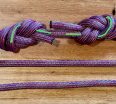
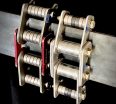

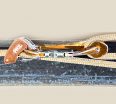
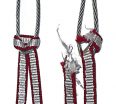

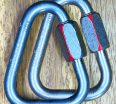
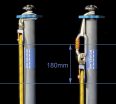
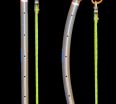
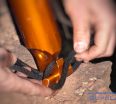
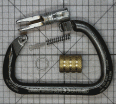
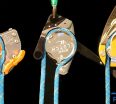
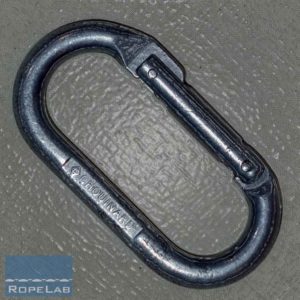
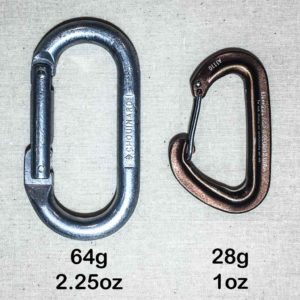
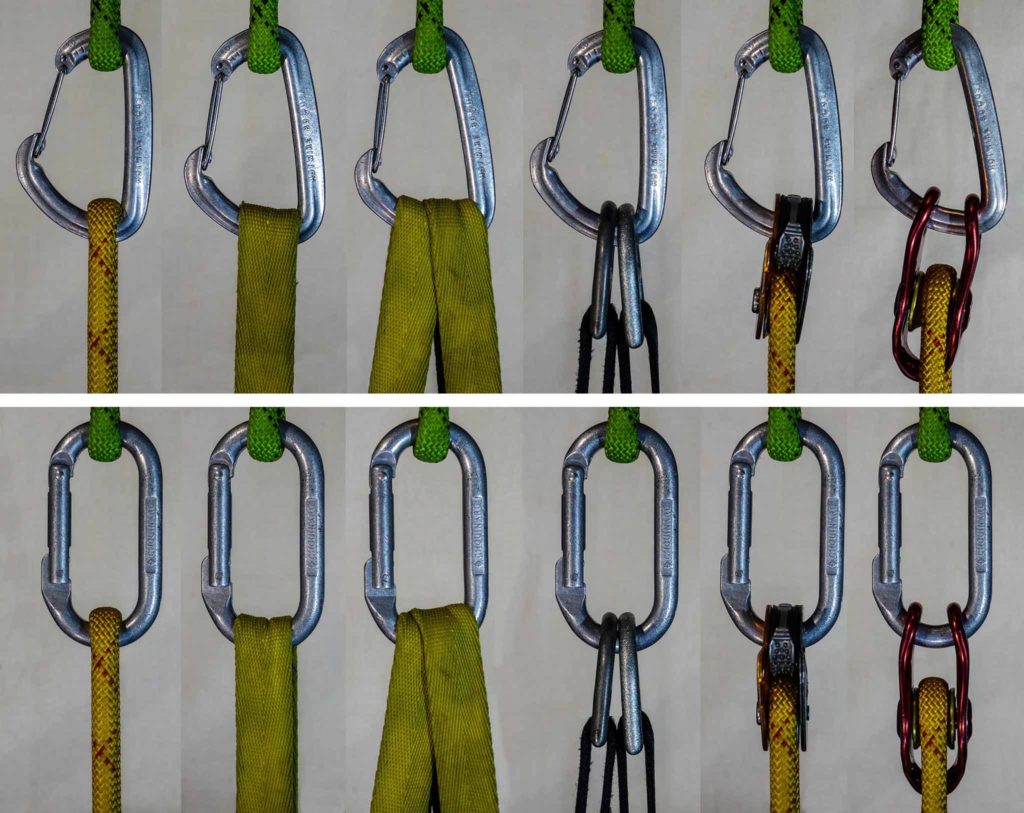
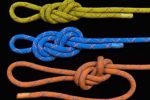
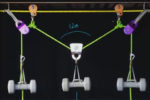
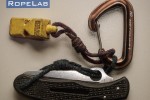
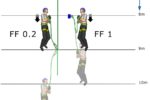
Great to see this illustrated so clearly, thanks Richard!
Thanks for the feedback Max, glad this information is helpful.